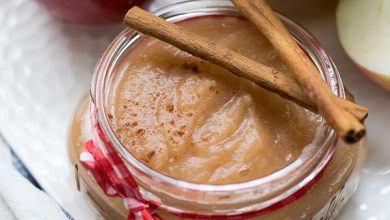🍳 Asian Scrambled Eggs are a delicious and flavorful dish made with eggs and a variety of Asian-inspired ingredients. They are a popular breakfast or brunch option in many Asian countries, and they can be customized to suit your taste preferences. Let’s delve into the details!
History:
Scrambled eggs, in various forms, have been enjoyed across cultures for centuries. In Asian cuisine, you can find variations of scrambled eggs in Chinese, Japanese, Thai, and many other regional cuisines. The specific ingredients and cooking techniques used in Asian Scrambled Eggs can vary widely, but they all share the common theme of using eggs as a base.
Components:
The components of Asian Scrambled Eggs can include the following, but can be adjusted based on your preferences:
- Eggs: The main ingredient, usually beaten and seasoned.
- Seasonings: Ingredients like soy sauce, fish sauce, or oyster sauce can be used for a savory flavor.
- Vegetables: Common choices include scallions, onions, bell peppers, and chilies.
- Proteins: You can add cooked meat, such as shrimp, chicken, or ham, if desired.
- Herbs and Spices: Fresh herbs like cilantro, basil, or Thai holy basil can add a burst of flavor.
- Oil: Often, vegetable or sesame oil is used for cooking.
Steps to Prepare Asian Scrambled Eggs:
Here’s a basic recipe for Asian Scrambled Eggs:
-
Beat the Eggs: In a bowl, crack and beat the eggs. Season them with a small amount of salt and pepper.
-
Heat the Pan: Place a non-stick pan or wok over medium-high heat and add a tablespoon of oil. Let it heat up.
-
Sauté Vegetables: Add the vegetables (e.g., scallions, bell peppers, or onions) and any protein (if you’re using one) to the hot pan. Sauté them until they become tender.
-
Add Eggs: Pour the beaten eggs into the pan. Stir gently and continuously with a spatula to create small curds.
-
Season: Add your choice of seasonings like soy sauce, fish sauce, or oyster sauce to taste. Continue to stir and cook until the eggs are mostly set but still slightly runny.
-
Herbs and Spices: Sprinkle fresh herbs like cilantro or basil, and if you like some heat, add chili slices.
-
Finish and Serve: Cook for another minute or until the eggs are fully set, but still moist. Remove from heat, and serve immediately.
Time Required:
The preparation time for Asian Scrambled Eggs can vary depending on your cooking skills and the number of ingredients used. On average, it should take about 15-20 minutes from start to finish. It’s a quick and easy dish that’s perfect for a busy morning or whenever you’re in the mood for a tasty, protein-rich meal.
🍽️ Enjoy your Asian Scrambled Eggs, and feel free to customize them with your favorite ingredients and seasonings to suit your taste!
🥚 Asian Scrambled Eggs can be a nutritious and wholesome meal, and I’m happy to provide you with some general nutrition facts and health information for this dish:
Nutrition Facts (Approximate, for a basic serving without additional ingredients):
- Serving Size: 1 plate of Asian Scrambled Eggs (2-3 eggs)
- Calories: Approximately 150-200 calories
- Protein: About 12-15 grams
- Fat: Around 10-12 grams
- Carbohydrates: Less than 5 grams
- Fiber: Less than 1 gram
- Sugars: Less than 1 gram
- Cholesterol: Approximately 350-400 milligrams
- Sodium: The amount of sodium can vary widely based on the amount of soy sauce, fish sauce, or other seasonings added. It’s essential to use these condiments in moderation for a balanced diet.
Health Information:
-
Protein: Eggs are an excellent source of high-quality protein, which is essential for muscle development and repair.
-
Vitamins and Minerals: Eggs also provide various vitamins and minerals, including vitamin B12, vitamin D, and essential minerals like iron and selenium.
-
Healthy Fats: The fats in eggs are primarily unsaturated fats, which can be a part of a heart-healthy diet.
-
Low in Carbohydrates: Asian Scrambled Eggs are low in carbs, making them a good option for those following low-carb diets.
-
Sodium Considerations: Be mindful of the sodium content in Asian Scrambled Eggs, especially if you use a lot of soy sauce or other high-sodium condiments. Excess sodium can contribute to high blood pressure in some individuals, so use these seasonings in moderation.
-
Versatility: One of the great things about Asian Scrambled Eggs is that you can control the ingredients and seasonings to make it as healthy as you’d like. Adding more vegetables and using less oil can enhance its nutritional value.
-
Dietary Preferences: Asian Scrambled Eggs can be adapted to various dietary preferences, including vegetarian or vegan versions by omitting animal products and using tofu or plant-based alternatives.
Remember that the exact nutritional profile can vary based on the specific ingredients and portion sizes you use. If you have specific dietary concerns or health goals, it’s a good idea to consult with a healthcare professional or a registered dietitian for personalized advice.
In general, Asian Scrambled Eggs can be part of a balanced diet when prepared with health-conscious choices and portion control. Enjoy this delicious dish while getting the nutritional benefits of eggs and other ingredients it includes. 🍳🌱








